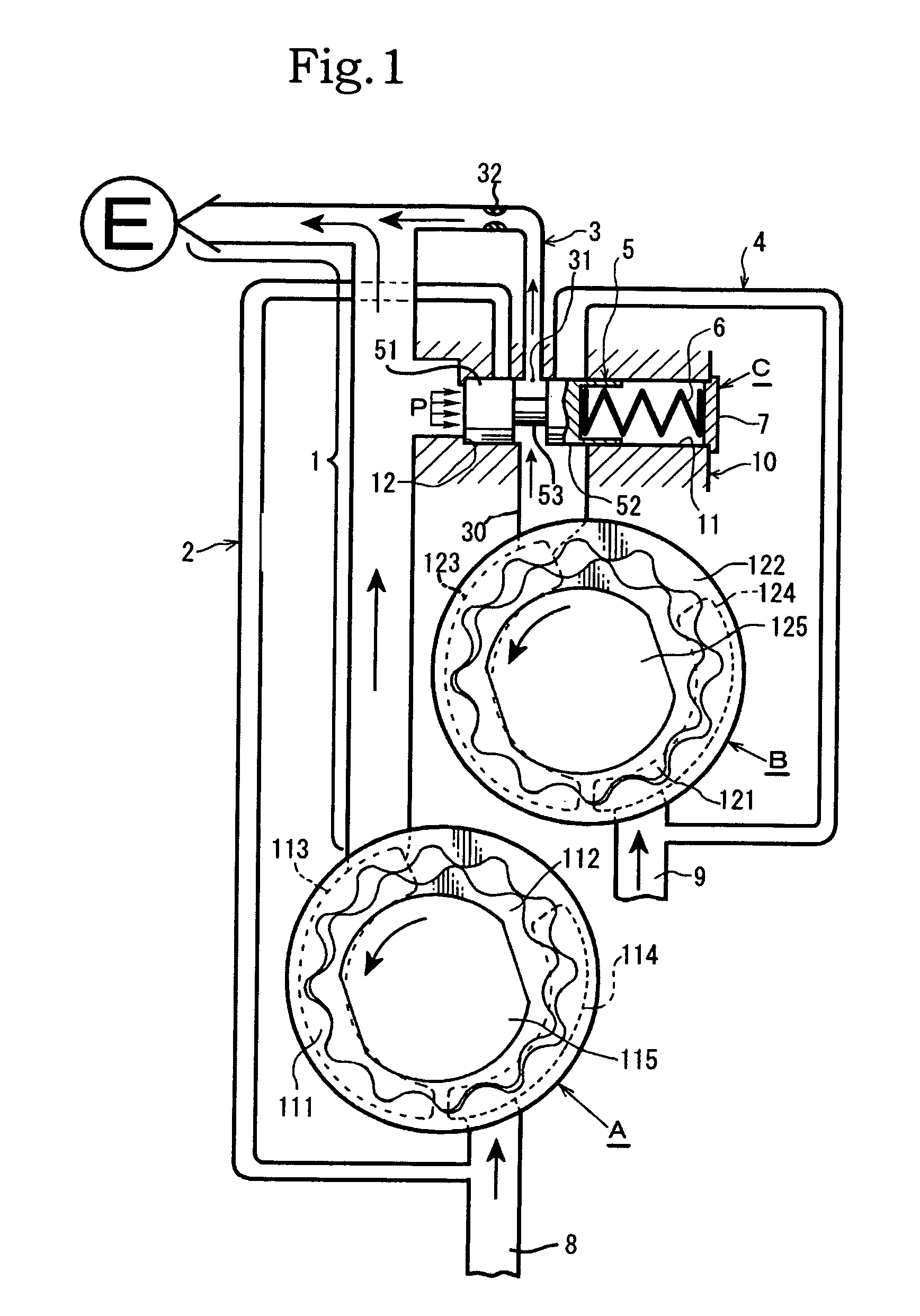Oil pump pressure control device
a technology of pressure control device and oil pump, which is applied in the direction of positive displacement liquid engine, separation process, liquid fuel engine, etc., can solve the problem of limiting the extent to which the sub-pump flow rate (pressure) is caused to fluctuate by the valve alone, increasing the pipe load and generated noise, etc. problem, to achieve the effect of reducing the pressure of the second rotor assembly, reducing the amount of unnecessary work, and dimensional precision
- Summary
- Abstract
- Description
- Claims
- Application Information
AI Technical Summary
Benefits of technology
Problems solved by technology
Method used
Image
Examples
first embodiment
[0023]In a description of the embodiments of the present invention given hereinafter with reference to the drawings, as shown in FIG. 1 to FIG. 3, the symbol A denotes a first rotor assembly and B denotes a second rotor assembly, each of which constitutes an oil pump configured from an outer rotor, an inner rotor and discharge port, and an intake port and so on provided in a casing. The device is configured from a first discharge passage 1 for feeding oil to an engine E, a first return passage 2 that returns to an intake passage 8 of the aforementioned first rotor assembly A, a second discharge passage 3 for feeding oil to the engine E, and a second return passage 4 that returns to an intake passage 9 of the aforementioned second rotor assembly B, an end portion side of the aforementioned second discharge passage 3 being coupled with the aforementioned first discharge passage 1 at a suitable position therealong. The first rotor assembly A and second rotor assembly B of this first em...
third embodiment
[0037]The operation of the pressure control valve C of the first rotor assembly A and second rotor assembly B of the third embodiment will be hereinafter described. First, in the low revolution range of the first rotor assembly A and second rotor assembly B, in other words, when the engine revolution number is in the low revolution range which constitutes the state of FIG. 7, the operation of the first valve portion 51 and second valve portion 52 of the pressure control valve C is the same as that of FIG. 1 and, accordingly, a description thereof has been omitted. The characteristics in the low revolution range under these conditions are shown in the characteristics graph of the revolution number and discharge pressure [see FIG. 5A] or characteristics graph of revolution number and discharge flow rate [see FIG. 5B].
[0038]A state in which the engine revolution number has risen further is taken as the intermediate revolution range. In this state, which constitutes the state of FIG. 8,...
PUM
| Property | Measurement | Unit |
|---|---|---|
| area flow rate | aaaaa | aaaaa |
| friction | aaaaa | aaaaa |
| pressure | aaaaa | aaaaa |
Abstract
Description
Claims
Application Information
 Login to View More
Login to View More - R&D
- Intellectual Property
- Life Sciences
- Materials
- Tech Scout
- Unparalleled Data Quality
- Higher Quality Content
- 60% Fewer Hallucinations
Browse by: Latest US Patents, China's latest patents, Technical Efficacy Thesaurus, Application Domain, Technology Topic, Popular Technical Reports.
© 2025 PatSnap. All rights reserved.Legal|Privacy policy|Modern Slavery Act Transparency Statement|Sitemap|About US| Contact US: help@patsnap.com



